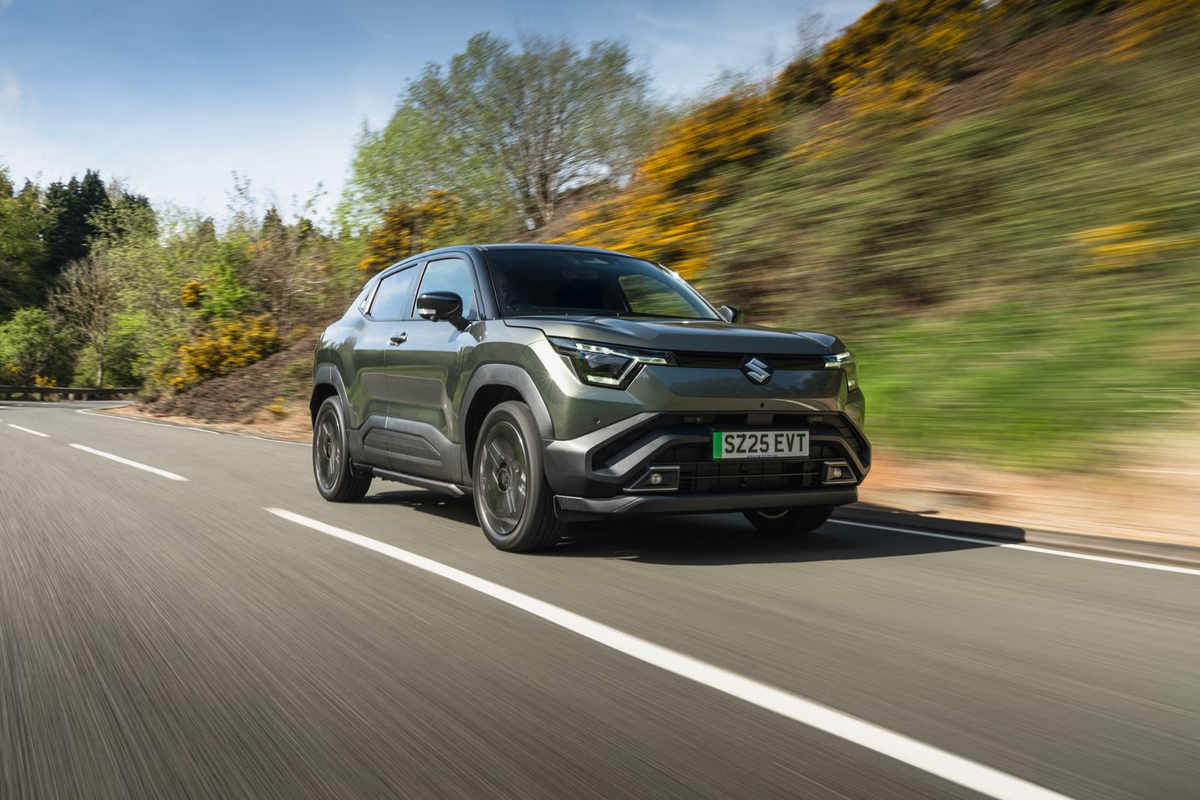
Charm. Some cars have it, others miss it by a mile. The new Suzuki e Vitara has charm by the bucketload, which makes it appealing despite a few failings.
The e Vitara marks an important milestone for the brand – its Suzuki’s first fully electric model. On paper, it looks like the perfect evolution of a long-standing nameplate that’s been part of Suzuki’s DNA for decades: chunky, compact and ready for adventure. And in many ways, it delivers exactly that. It’s good to drive, feels reassuringly grippy and carries genuine off-road genes, even if few buyers will ever go beyond a gravel car park.
But while Suzuki’s engineers have done a great job on the mechanical side, the technology inside doesn’t feel quite as fresh. The e Vitara is hugely likeable and has an undeniable rugged appeal, yet in a world where electric SUVs from Kia, Hyundai and Renault are pushing boundaries, Suzuki’s effort feels more retro than revolutionary. And that’s despite the e Vitara being a joint venture with Toyota, whose Urban Cruiser is identical in all but badging and price.
The e Vitara is a car you’ll warm to. The steering is light but accurate, the ride impressively supple even on big 19in wheels, and visibility is strong thanks to that proper upright SUV stance. It feels secure and capable, with just enough of that Suzuki 4x4 spirit lingering from the old days.
Inside, the cabin looks smart and well put together, with a mix of soft-touch materials and harder plastics that never feel cheap. The high-set seating position gives an authentic SUV feel, and there’s a pleasing simplicity to how it all works – mostly. The infotainment, unfortunately, lets the side down with sluggish responses and awkward switching between Apple CarPlay and the in-built Toyota-based OS. It’s the car’s biggest frustration in daily use.
Still, for those who want an honest, well-priced electric SUV that feels a bit different, the e Vitara makes a likeable case for itself. It’s just not as cutting-edge as its rivals, and its range and charging performance fall short of the best.
How we tested
The Suzuki e Vitara lived with the Fowler family for a week and I used it for everything from the station run to shopping trips, taking my mother-in-law out (she found it easy to get in and out), a trip around the motorway to the airport and even a trip down some local green lanes and through a couple of deep fords.
Suzuki e Vitara: £29,999 to £37,799, Suzuki.co.uk
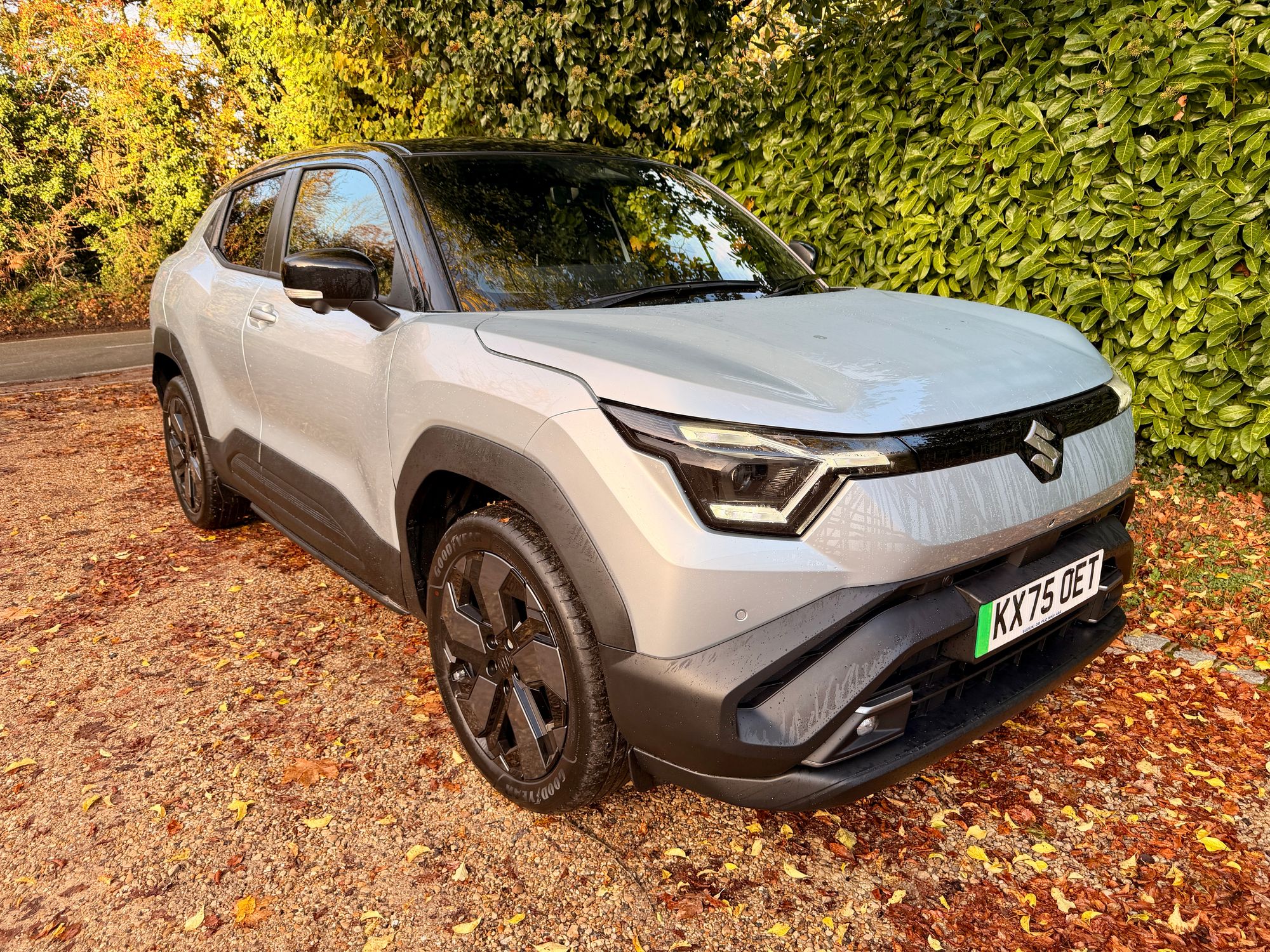
Independent rating: 7/10
Suzuki e Vitara specs
Battery, range, charging, performance and drive
Suzuki offers the e Vitara with two battery sizes: a 49kWh pack and a larger 61kWh unit. Both use lithium iron-phosphate (LFP) chemistry for extra longevity and stability. The smaller battery powers 2WD Motion models, while the 61kWh version underpins both 2WD and optional dual-motor ALLGRIP-e 4WD variants.
The 61kWh 2WD car claims a maximum WLTP range of 264 miles, not bad but not spectacular with the likes of the Hyundai Kona offering well over 300 miles of range. The smaller battery will go for a maximum of 213 miles between charges.
Charging isn’t especially fast either: DC rapid charging from 10 to 80 per cent takes around 45 minutes, while a full 7kW home charge takes roughly nine hours. An 11kW wallbox can cut that to about five and a half hours.
Performance is adequate rather than exciting. Power outputs vary from 142bhp in the 49kWh car to 172bhp in the 61kWh 2WD version. The dual-motor ALLGRIP-e, which adds an extra 48kW motor to the rear axle, delivers a combined 181bhp – enough to make it feel brisk from a standstill, even if Suzuki doesn’t quote 0-62mph times (and didn’t back in the 90s either).
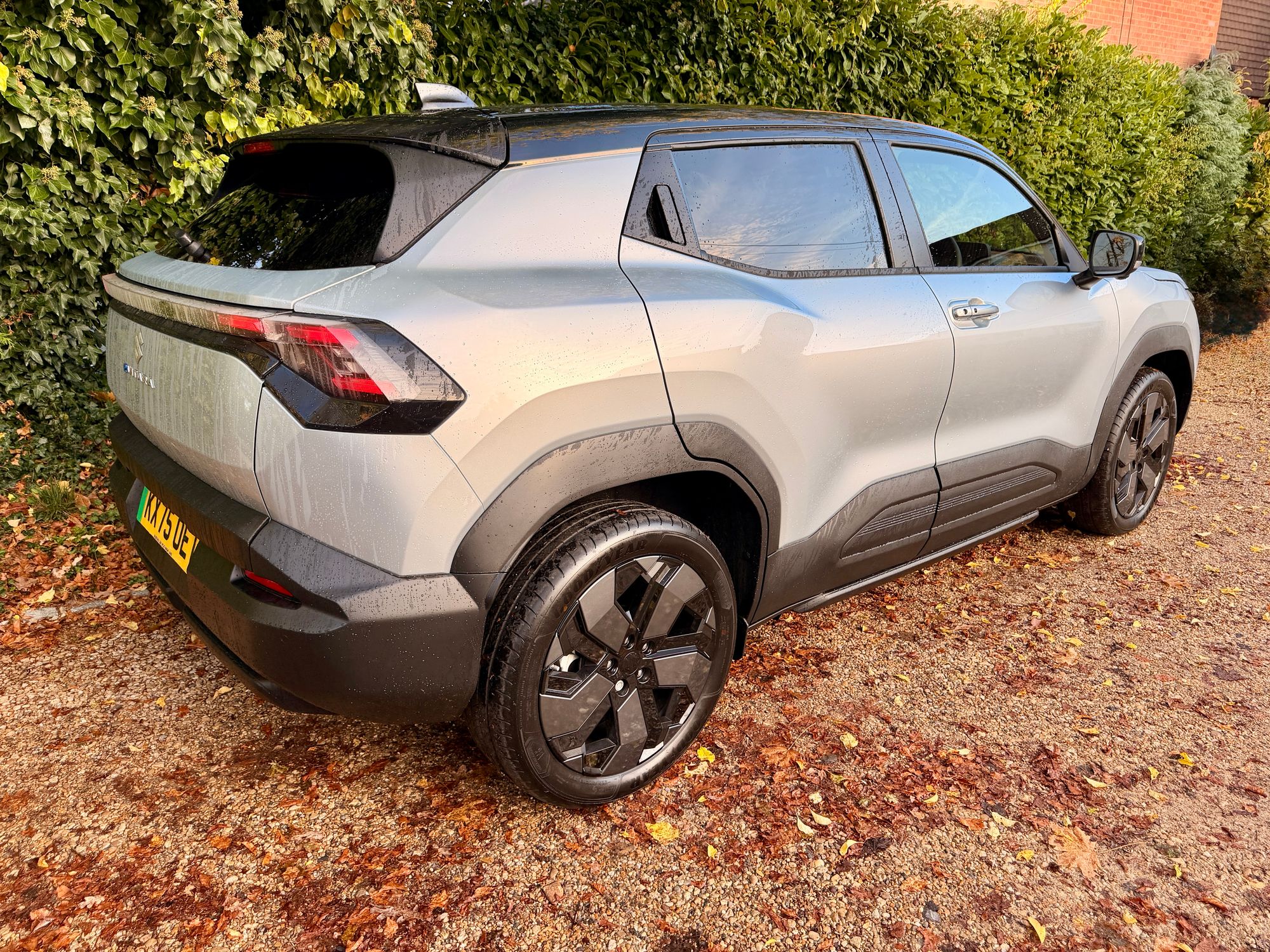
What impresses more is how the car feels on the move. The suspension strikes a lovely balance between composure and comfort. Even over broken British roads, the e Vitara rides with an easy suppleness that many rivals could learn from – even on the big 19in wheels of the top-spec Ultra ALLGRIP-e model I drove. Steering is light but well-weighted, and the car’s compact footprint makes it genuinely easy to park or thread through narrow lanes.
On a short green-lane test, the ALLGRIP-e 4WD version showed the kind of surefootedness Suzuki’s famous for. It’s no hardcore off-roader, but it’ll handle muddy tracks and grassy slopes better than most so-called 4x4s. There’s a Trail mode that automatically brakes spinning wheels to direct torque to those with grip, and it works seamlessly.
Noise levels are generally low, too. Suzuki’s engineers added 20 sound-insulating baffles around the body and sound-deadening glass for the windscreen, so it stays quiet at motorway speeds. You can sense the brand’s experience in making small cars that punch above their weight for refinement yet are still fun to drive.
Interior, practicality and boot space
Step inside and the Indian-built e Vitara feels impressively well put together and reassuringly solid. The design sticks to Suzuki’s ‘High-Tech and Adventure’ theme, with chunky air vents, a high centre console and a straightforward control layout. There’s a pleasant mix of textures, and even if some plastics are harder than in pricier rivals, it never feels cheap. The Ultra trim gets half-synthetic leather upholstery and a tan-trim option if you go for the Land Breeze Green or Silver paint.
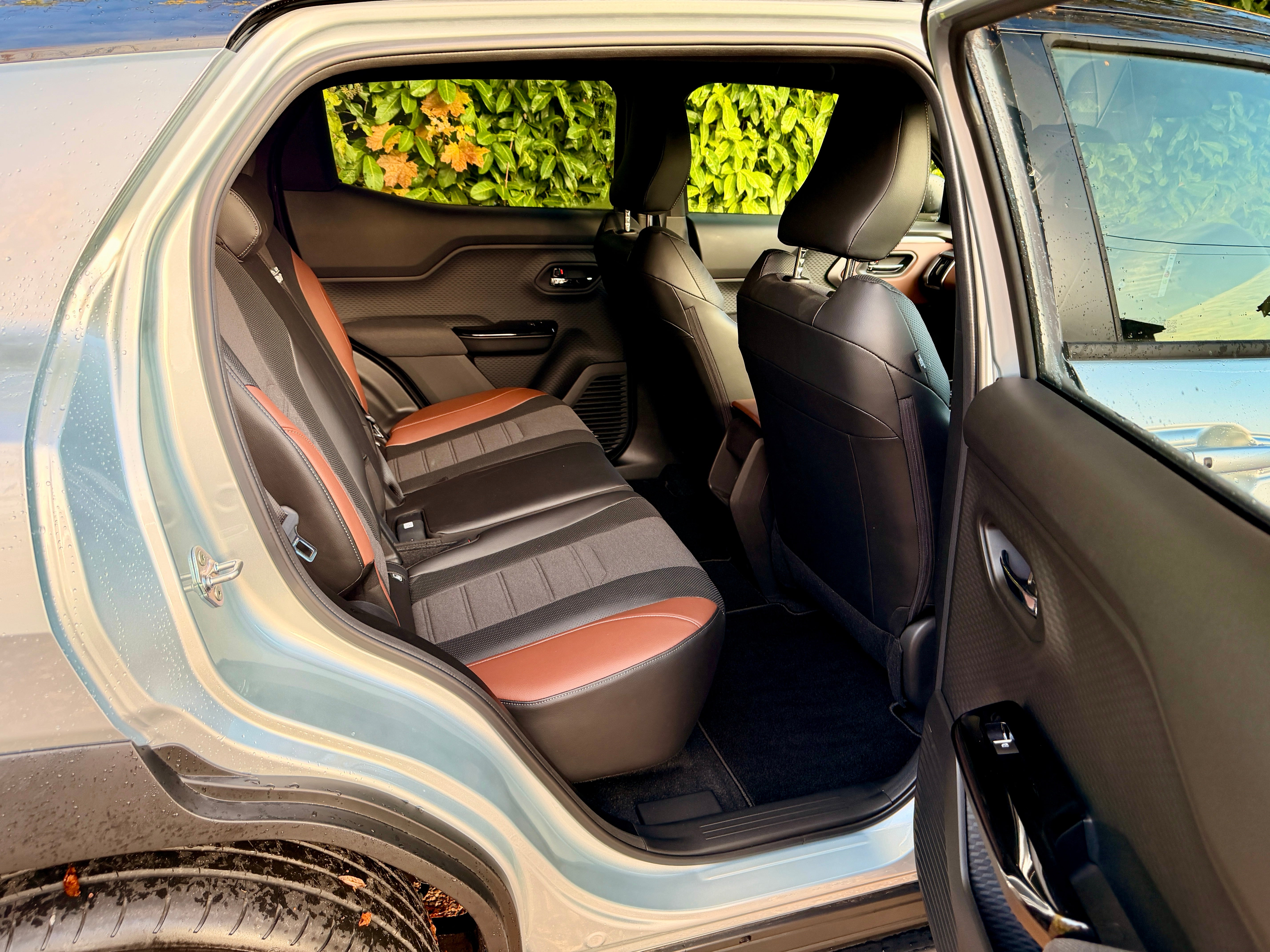
Space in the front is excellent, with supportive seats and a commanding driving position. The Ultra model adds a 10-way electric driver’s seat, heated front seats and a heated steering wheel. Rear passengers will be equally happy – there’s generous knee and headroom, helped by the tall roofline and long 2,700mm wheelbase.
There’s an old-school sunroof rather than a panoramic glass roof, but that feels in keeping with the e Vitara’s honest character. Rear seats recline and slide fore and aft, which is a nice touch in this class.
The boot, though, is on the small side. At 306 litres with the seats in their forward position, it’s easily beaten by most electric SUV rivals. There’s an underfloor compartment and old-fashioned folding flaps that bridge the gap when you drop the backrests, but the tailgate design itself is awkward – you press a button hidden in the bumper, which is bound to get filthy in winter. It’s also odd that the boot door opens lower than the boot floor.

That said, practicality elsewhere is strong. There’s decent in-cabin storage, wide-opening doors, and a sense that Suzuki thought about real-world use. The doors cover the sills to keep your trousers clean – a nice touch that shows this car was designed by people who actually drive in bad weather.
Technology, stereo and infotainment
If there’s one area where the e Vitara falls behind, it’s technology. On paper, it looks generous: a pair of displays (10.25in digital driver’s display and 10.1in central touchscreen), built-in navigation, wireless Apple CarPlay and Android Auto, plus physical climate controls. But in practice, the software feels clunky.

The infotainment system is based on Toyota’s OS, and switching between that and smartphone mirroring is cumbersome. It sometimes drops connections altogether, and when you start the car you have to wait through a ‘checking surroundings for safety’ message before anything loads. The driver display also feels wasted behind one of the thickest screen surrounds that eats into the display area. It works, but it never feels modern.
Still, the basics are there: wireless phone charging on Ultra trim, a 360-degree camera for parking, and the Suzuki Connect app for remote functions like pre-heating the cabin, checking charge status or programming charging schedules. The system even lets you upload your own photos as wallpaper, which is charming if not essential.
Audio quality is decent. Motion models get a four-speaker setup, while the Ultra boasts an upgraded six-speaker Infinity system with a 12-litre subwoofer and amplifier. It’s crisp and powerful enough for most tastes.
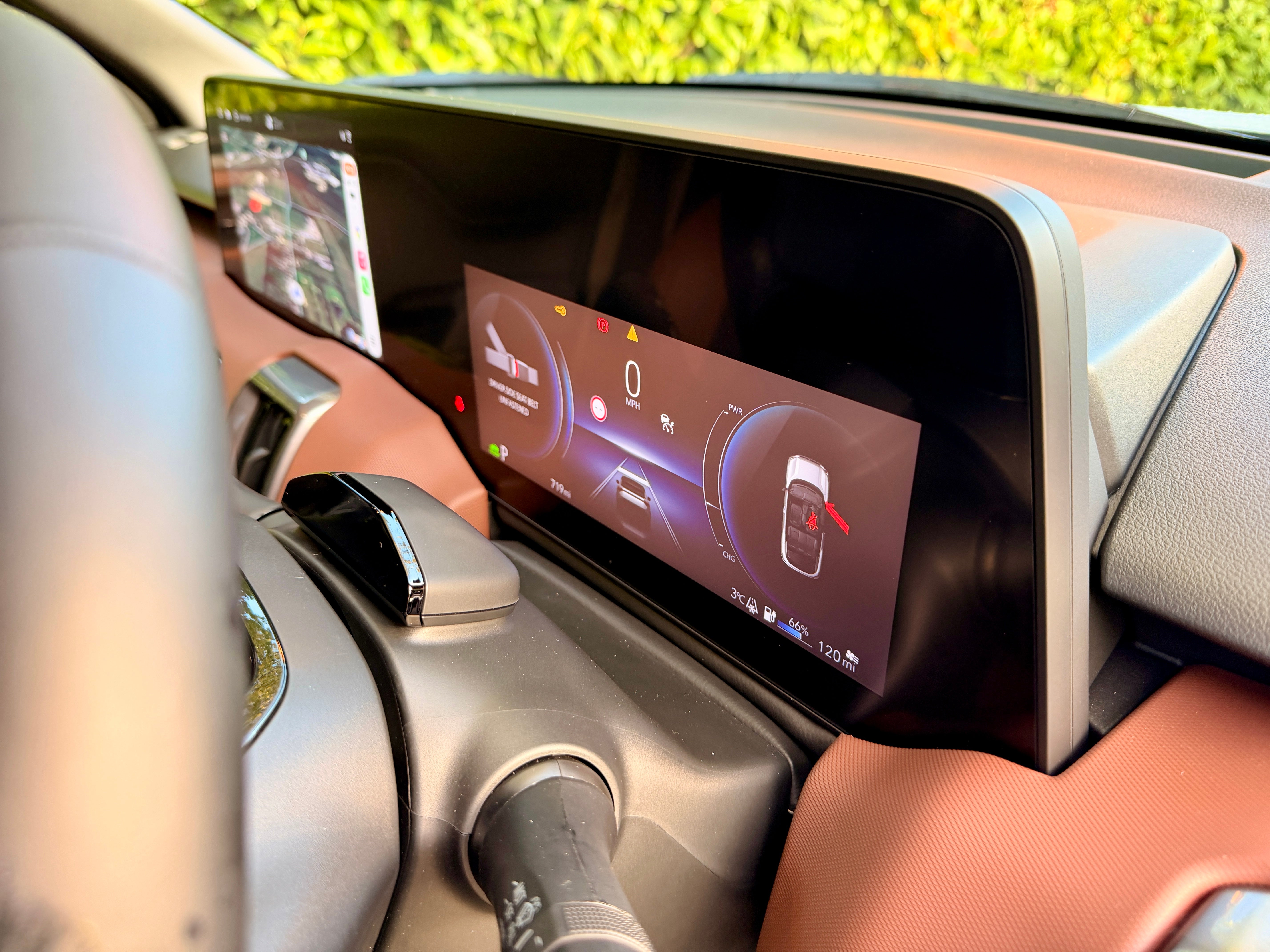
Safety tech is extensive, including Dual Sensor Brake Support, Lane Keep Assist, Blind Spot Monitoring, Traffic Sign Recognition, Adaptive Cruise Control, and Suzuki’s new Driver Monitoring System that warns if you’re distracted or drowsy. There’s also Multiple Collision Braking, which automatically applies the brakes after an impact to prevent a secondary collision.
The e Vitara is well equipped – it’s just the execution that lacks polish.
Prices and running costs
The Suzuki e Vitara range starts at £29,999 for the 49kWh Motion model, rising to £35,799 for the 61kWh 2WD Ultra and £37,799 for the range-topping 4WD Ultra ALLGRIP-e. The e Vitara isn’t eligible for the government’s Electric Car Grant, so, at the time of writing, Suzuki has dropped all prices by £3,750 – the equivalent of the higher rate of the ECG.
That makes the car look considerably more attractive with prices going from £26,249 to £34,049.
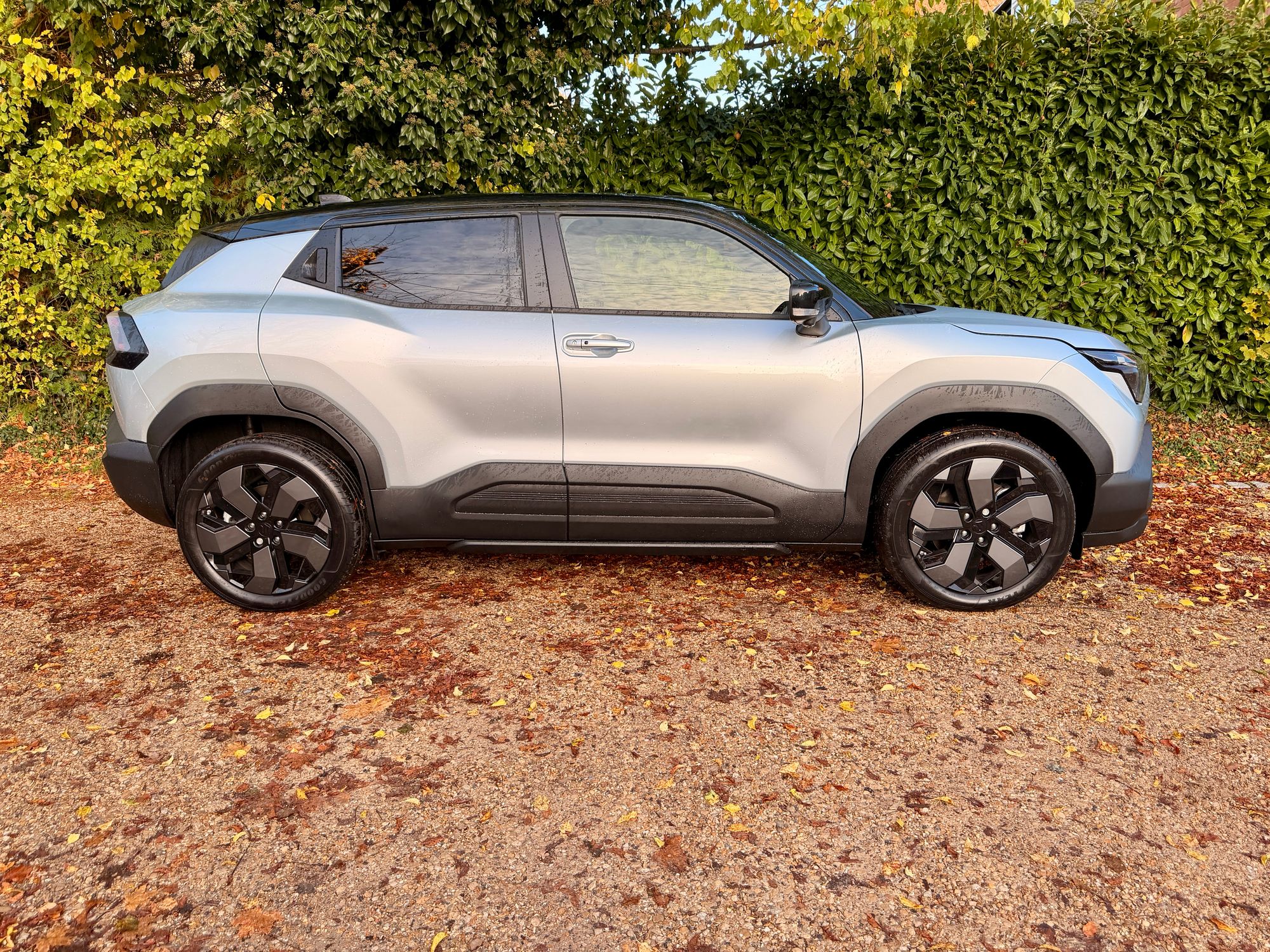
All models come well equipped, and Suzuki’s warranty remains one of the best in the business: up to 10 years / 100,000 miles (three years manufacturer, seven years’ service-activated) plus eight years on the battery. Three years of Suzuki Connect services are included, too.
Running costs will depend on how often you rapid charge, but the efficient LFP battery chemistry and standard heat pump help maintain reasonable efficiency year-round. Charging overnight at home on an off-peak tariff could see annual running costs comfortably undercut a petrol Vitara’s fuel bill by several hundred pounds.
Servicing should be affordable too – Suzuki’s hybrid models are among the cheapest to maintain, and there’s little reason to expect the e Vitara to be any different.
Suzuki e Vitara rivals
FAQs
How long does it take to charge?
Using a rapid charger, the e Vitara takes around 45 minutes to charge from 10 to 80%. A 7kW home wallbox will recharge the 61kWh battery from empty in about nine hours, while an 11kW three-phase charger cuts that to around five and a half hours.
How much does it cost - is it worth it?
If you value charm, comfort and genuine SUV feel over outright range or the latest tech, absolutely. But if you’re looking for the most advanced electric SUV for your money, rivals from Hyundai and MG will serve you better.
Does Suzuki replace batteries for free?
Yes – the e Vitara is covered by a comprehensive 10-year / 100,000-mile warranty (three years manufacturer plus seven service-activated) and an eight-year battery warranty.
Why trust us
Our team of motoring experts have decades of experience driving, reviewing and reporting on the latest EV cars, and our verdicts are reached with every kind of driver in mind. We thoroughly test drive every car we recommend, so you can be sure our verdicts are honest, unbiased and authentic.
The verdict: Suzuki e Vitara
I do find the Suzuki e Vitara appealing – it’s an EV that prioritises comfort, simplicity and SUV authenticity over cutting-edge tech, yet it can still go off road. It feels honest, capable and refreshingly straightforward to drive, but its modest range and clunky infotainment show that Suzuki’s first EV still has catching up to do. It’s not the most advanced electric SUV, but it is one of the most likeable.







